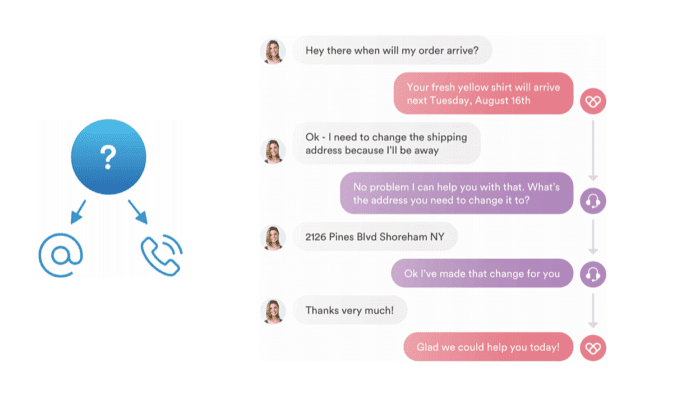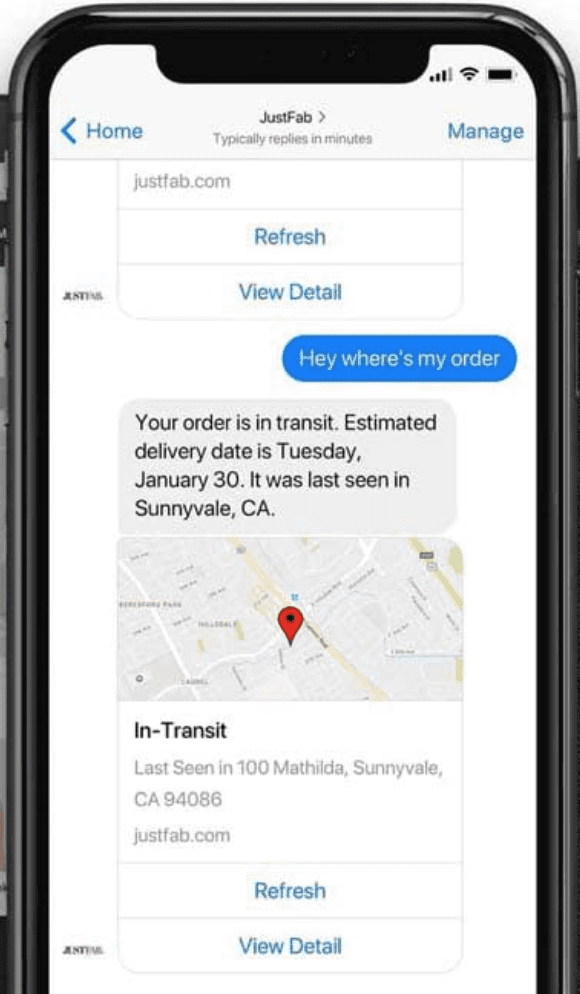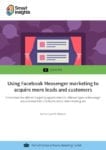Incorporating the latest Messenger updates will help you drive business success
As a professional in the digital marketing space, you are probably aware of the restrictions on Messenger responses because of Facebook's 24 + 1 policy. However, you can still take advantage of this narrow time frame, boost marketing efforts on the platform, and connect strategically with consumers.
In fact, 1-800-Flowers has experienced success using Messenger for outreach. The flower and gift delivery service reports that 70% of its chatbot orders are made by new customers, many of whom fall into a younger demographic than its usual audience. As a result, the use of Messenger has helped 1-800-Flowers stretch its consumer reach further than before.
Other high-profile uses of Messenger included the Wall Street Journal, which allowed users to get stock quotes or headlines delivered to them; HP, which enabled users to print files from Facebook and Messenger to any connected HP printer; and HealthTap, which offered the ability to get free doctor responses to medical questions.
Now, Facebook’s frequent policy updates make it difficult for marketers to keep up. If you’re not seeing favorable results from your efforts, the following deep dive should clarify some of that confusion.
Facebook increases scrutiny
When the 24 + 1 policy was introduced, it was difficult to enforce and relied on the goodwill of users. Businesses were sending lots of messages, and there wasn’t a way to systematically label content as promotional. After two months, Facebook announced changes that allowed companies to communicate with users outside of the 24-hour window in limited scenarios. Acceptable purposes included shipping and order updates, reservation notices, and issue resolution.
The fluid evolution of Facebook’s policies is hard to keep track of — it’s almost impossible for marketing teams without a dedicated stakeholder. Even businesses that explore chatbot applications are often behind the curve because they lean on third-party vendors that focus more on development than platform policy.
In February 2018, Facebook Messenger introduced three unique new tags that described specific use cases that users wanted: community_alert, confirmed_event_reminder, and non_promotional_subscription. These tags, in addition to the business_productivity tag added in September, indicate messages that are acceptable to send outside of the 24 + 1 window. By requiring a label for each message, Facebook is able to systematically enforce its rules, and the platform's review process ensures the accurate use of labels.

Facebook does offer subscription messaging, which is not constrained by the 24 + 1 rule time frame. But promotional content is not permitted, and Facebook limits subscription messaging to news, which informs readers about events in sports, weather, government, etc.; productivity, which gives readers to-do items and reminders; and personal tracking, which offers tips on health and fitness. If the company can get the user to engage in one of these channels, that message switches to the standard messaging format, which opens it up for promotional materials. Also, the company will have to apply for subscription messaging for every profile and page individually.
3 ways to use the 24 + 1 policy to better connect with consumers
Messenger offers an incredible opportunity to marketers, with high engagement rates and timely opens. As Facebook works to respond to user privacy concerns, keeping your Messenger strategy up-to-date will ensure you’re getting the most value out of this evolving and immersive platform. Monitor Facebook’s changelog for updates and to maintain tagging and other configuration items accordingly. The following are the three most important rules to keep in mind as you plan your use of Messenger to engage with consumers:
1. Don't plan to mirror your email marketing strategy
Once a customer joins your email newsletter, he or she is signing up to receive as many messages as you want to send. Messenger, on the other hand, places a strict limit on promotional content. When marketers set up Messenger expecting it to replicate their email marketing strategy, they’re setting themselves up for disappointment.
A highly accessible channel where customer engagement is unparalleled, Messenger does offer a significant opportunity due to engagement rates. Marketers can put this strategy into practice by implementing an automated assistant that can provide services to customers in real time while providing the data and events triggers that are required to use this channel effectively to drive revenue and loyalty.
To achieve success, focus on the conversational aspect that makes the platform unique to ensure your bot is providing value and engaging customers. Identify services you can provide, content and reminders customers want, and the right moments to promote to them.

2. Create reasons for users to return to Messenger on their own
When users interact with your Messenger bot on their own accord, your 24-hour window resets. Encourage these interactions by giving customers concrete value and convenience in this channel, and promote your Messenger bot outside of the channel itself, whether it’s on your website or on social media platforms.
If customers know how your bot can meet their needs, they’re more likely to give it a try and come back and use it again. Every time they return, you can deliver additional content or promotions.
3. Leverage value-added services as a part of your strategy
In order to boost the customer experience and retention, many brands are offering value-added services that benefit consumers and align with their products. Offering access to these services via Messenger makes them easier, faster, and more personable for the customer, all while providing data to your customer relationship management.
More importantly, the more users who interact with these services via Messenger, the more touchpoints you have for increasing engagement — and the more promotional messages you can send out in each 24 + 1 window.
Messenger is a strategic platform for everything from customer care to pre-sales service. While many companies are taking steps to implement a Messenger bot, a much smaller number are staying abreast of policy changes that impact their strategy. When it comes to Messenger, knowledge is power. Incorporating the latest updates will help you reach customers, deliver value, and drive business success.
Fang Cheng is the CEO and co-founder of
Linc Global, a customer care automation platform that helps brands differentiate with automated, value-added services and experiences across the channels shoppers prefer.









